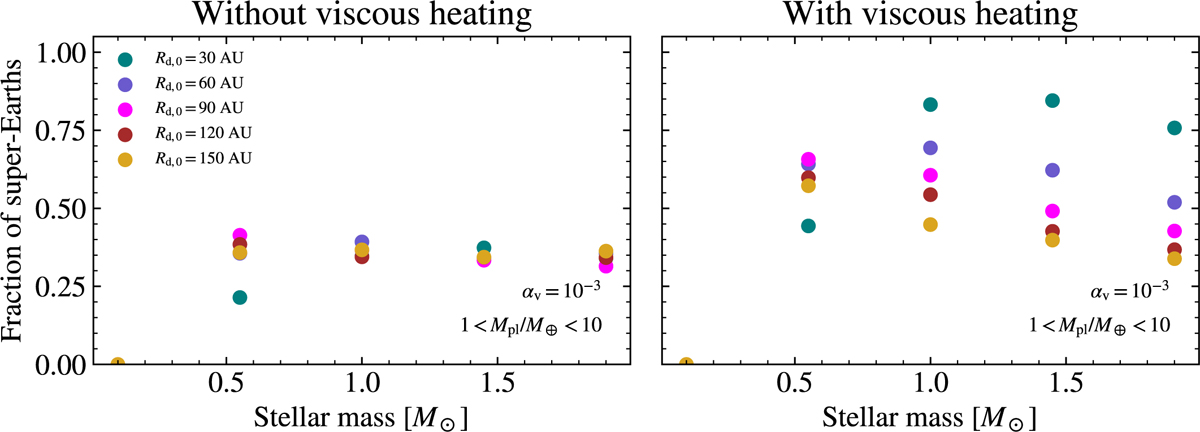Fig. C.1

Download original image
Same as Fig. 4 but with αv = 10−3 and Ṁg,0 = 10−8 M⊙/yr. We find similar results in both the irradiated case (left) and the viscously heated case (right) compared to our nominal model. In the irradiated case, the fraction of super-Earths saturates at a lower stellar mass due to efficient inward migration. In the viscously heated case, we find that the fraction of close-in super-Earth still decreases with increasing stellar mass for large discs but the reduction is slightly lower compared to our nominal model.
Current usage metrics show cumulative count of Article Views (full-text article views including HTML views, PDF and ePub downloads, according to the available data) and Abstracts Views on Vision4Press platform.
Data correspond to usage on the plateform after 2015. The current usage metrics is available 48-96 hours after online publication and is updated daily on week days.
Initial download of the metrics may take a while.


